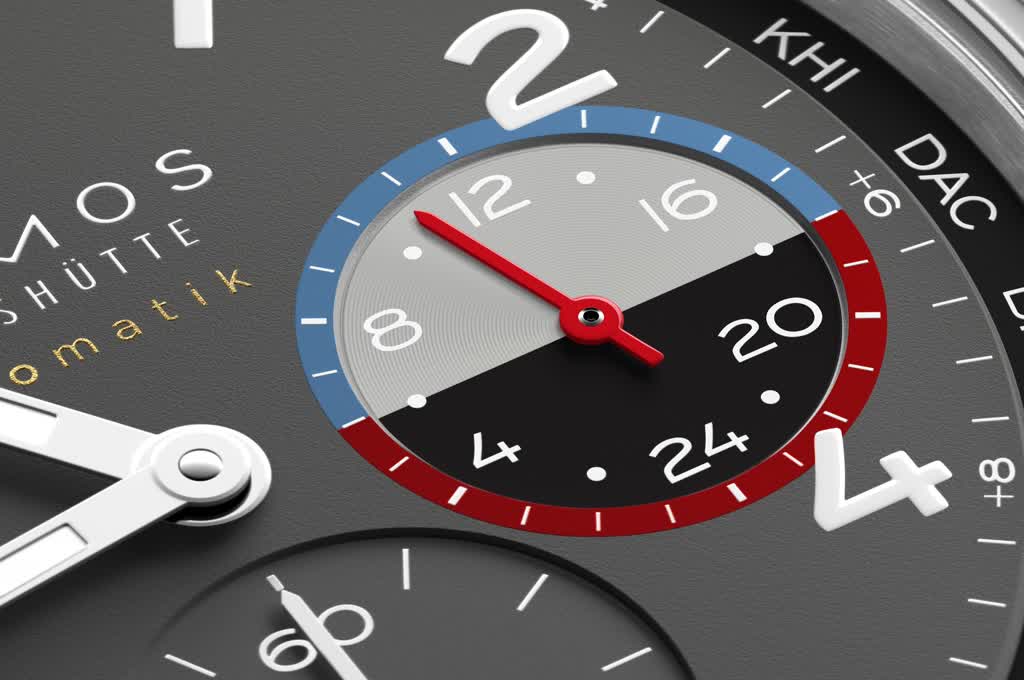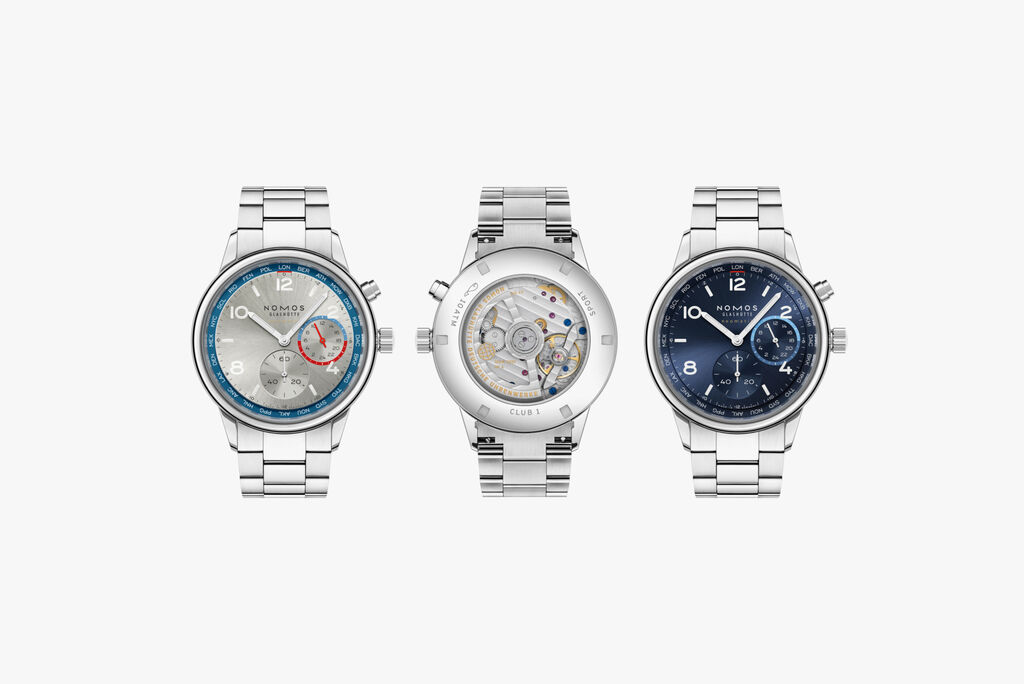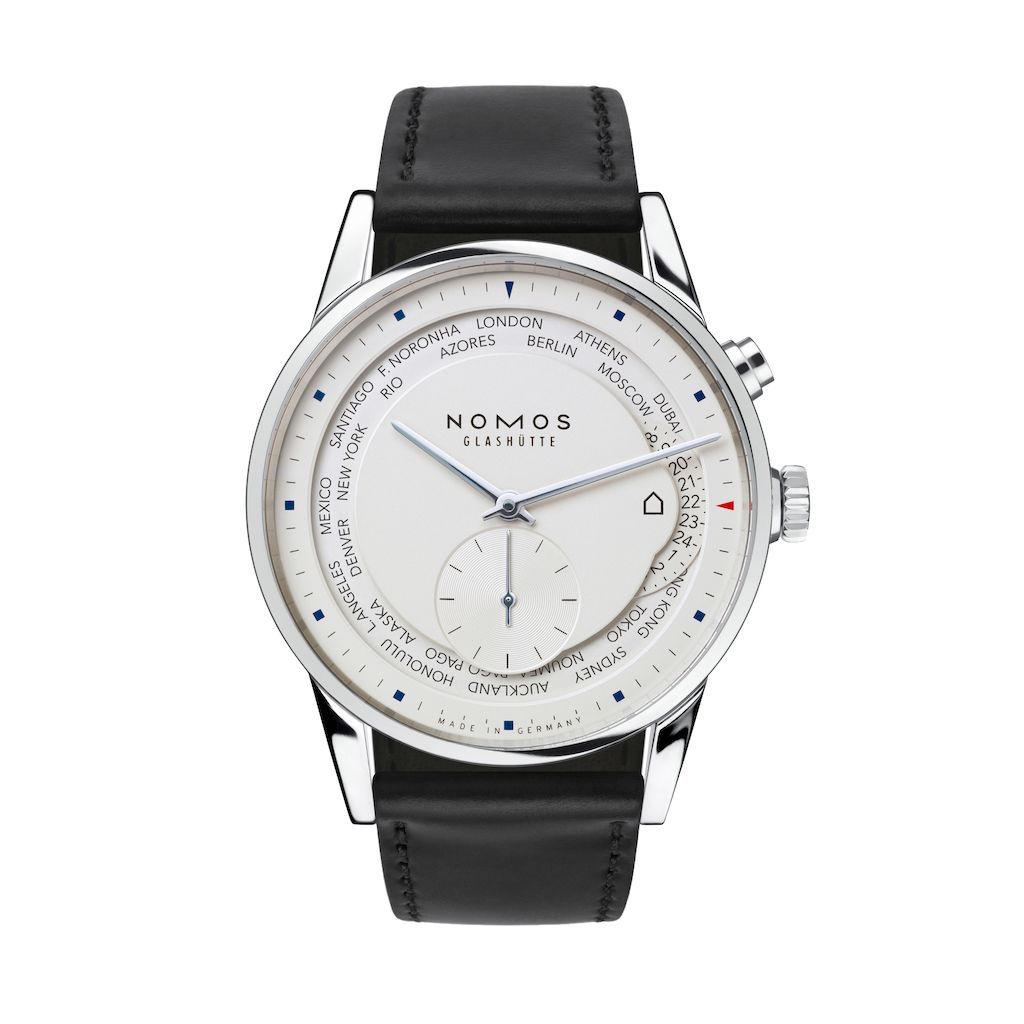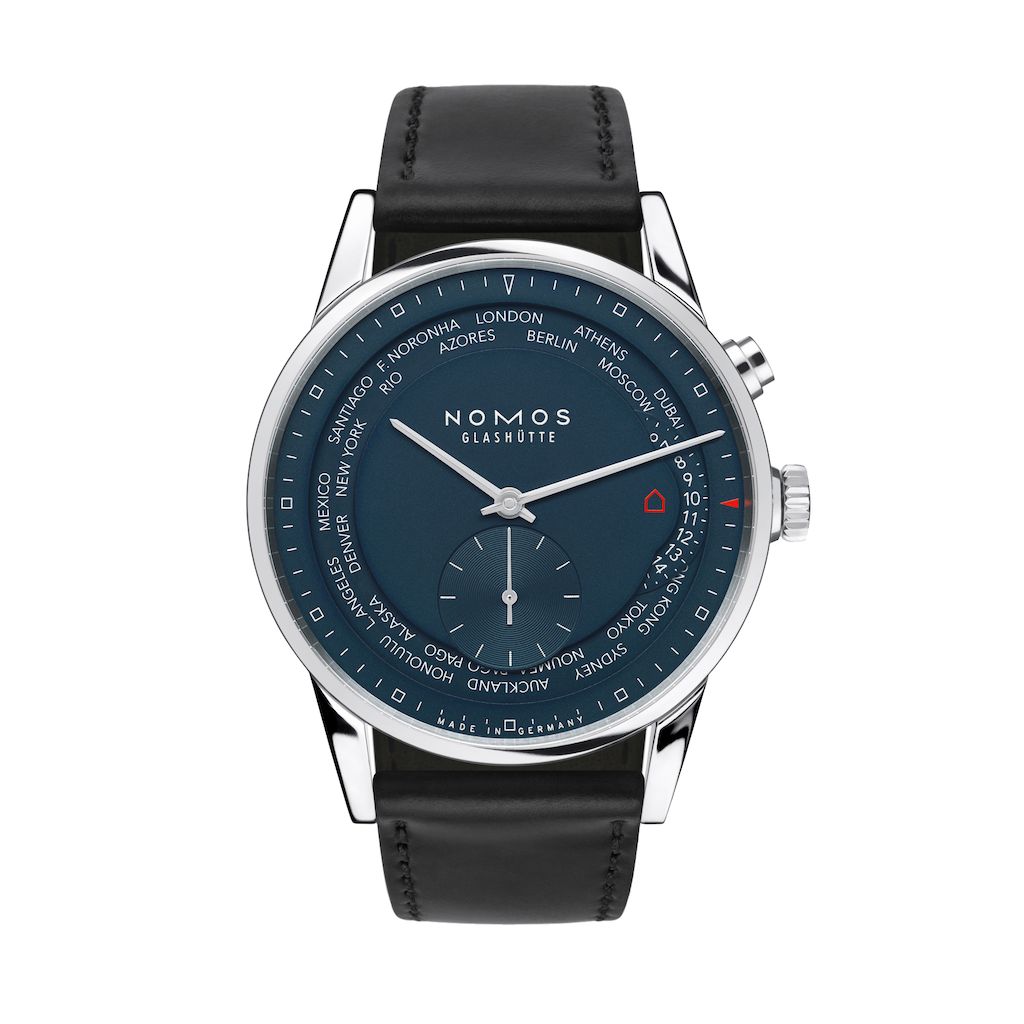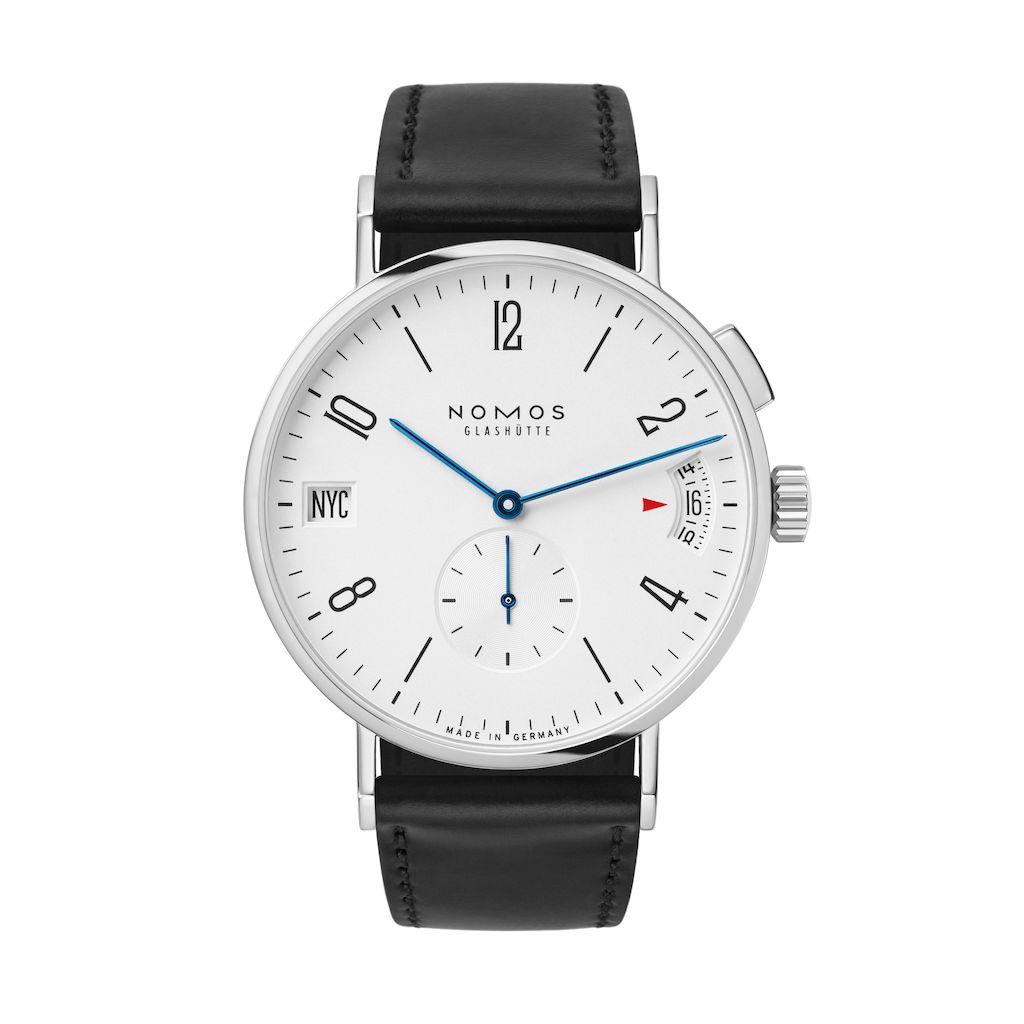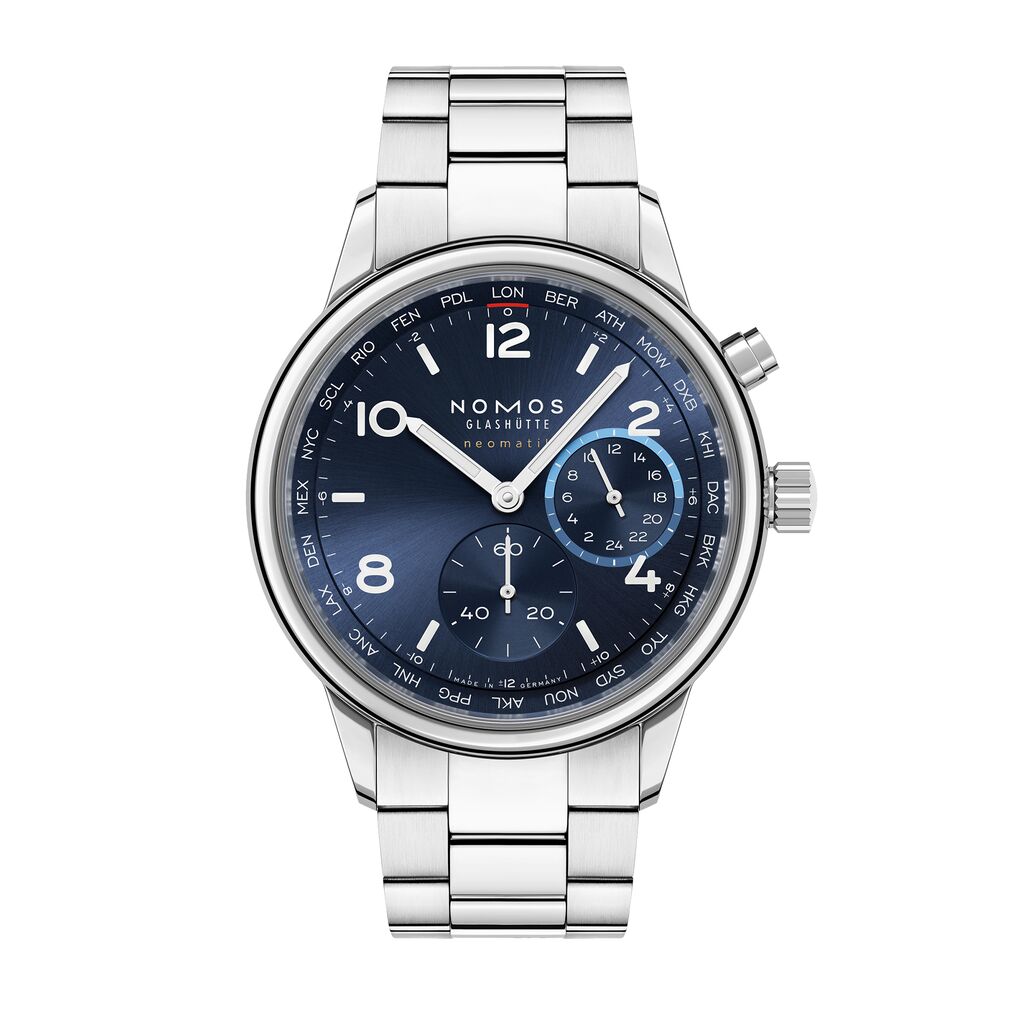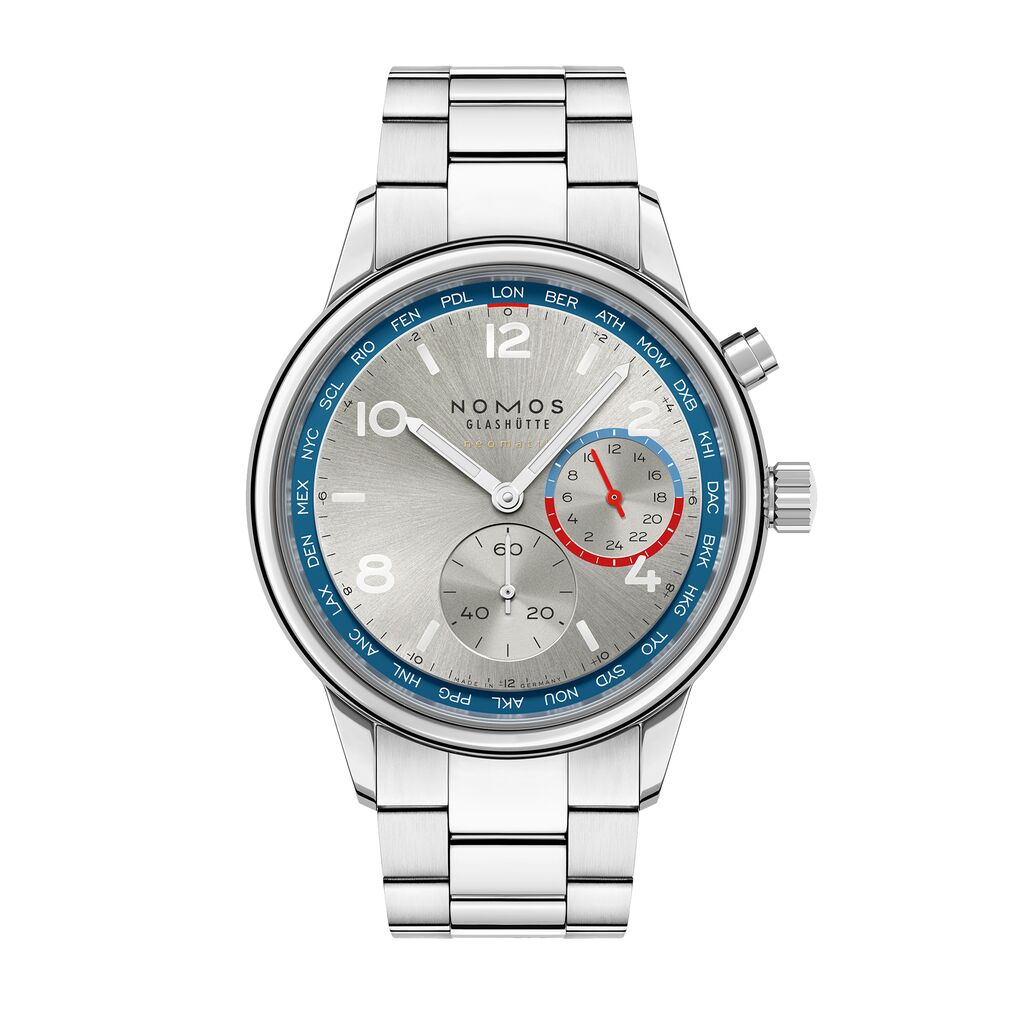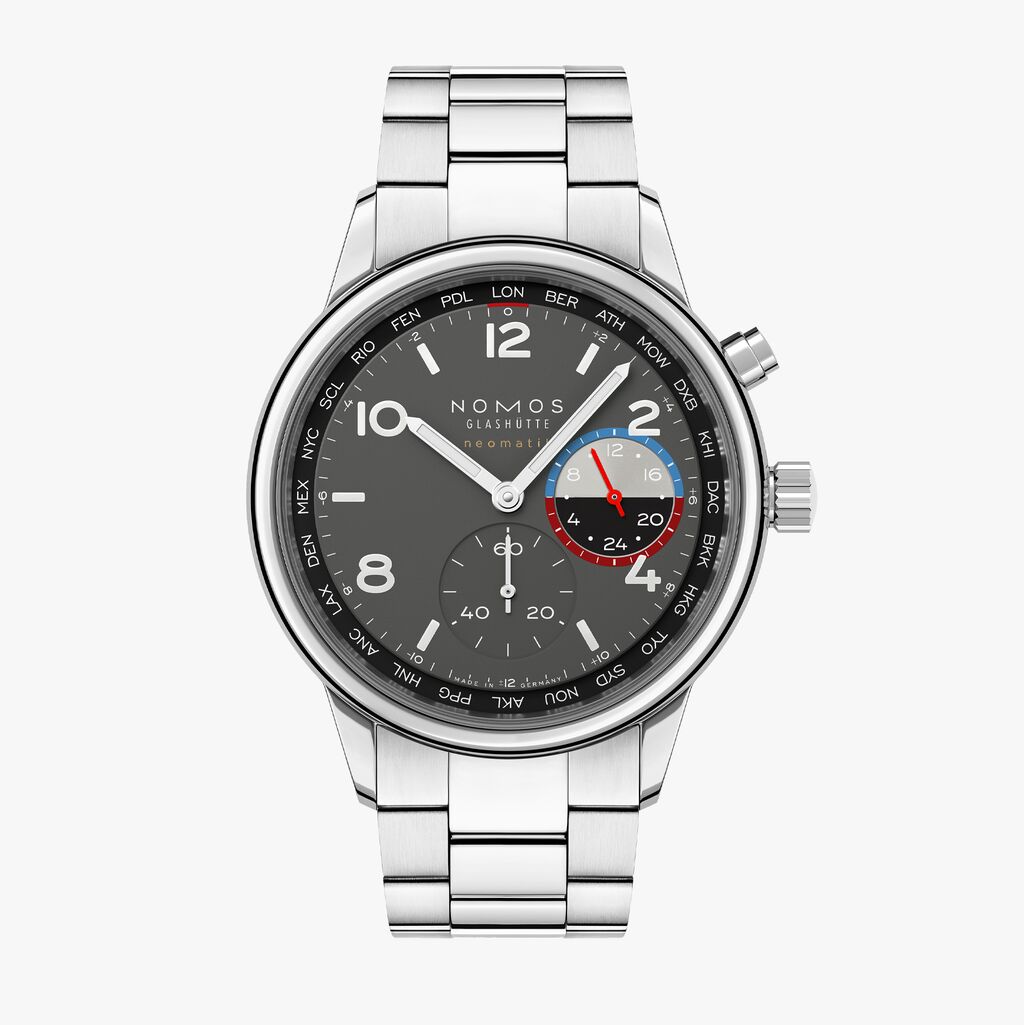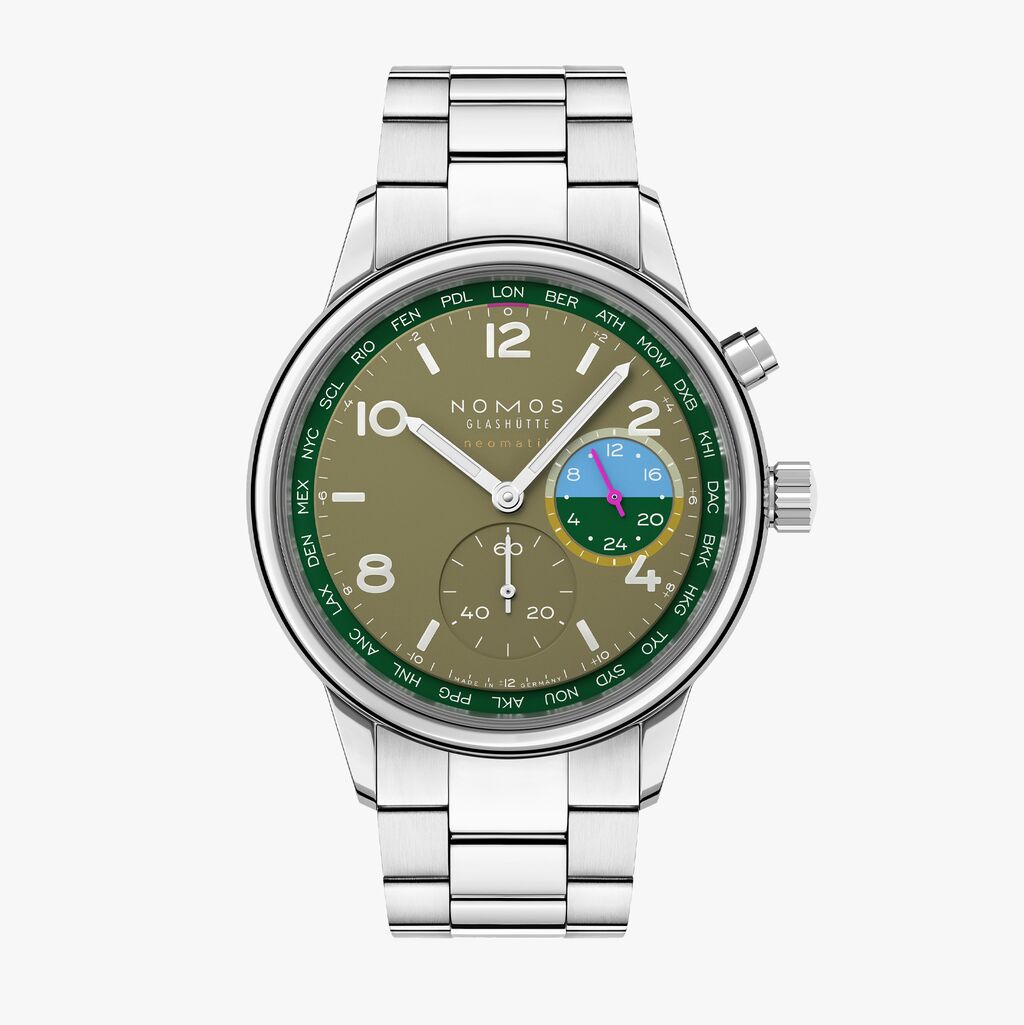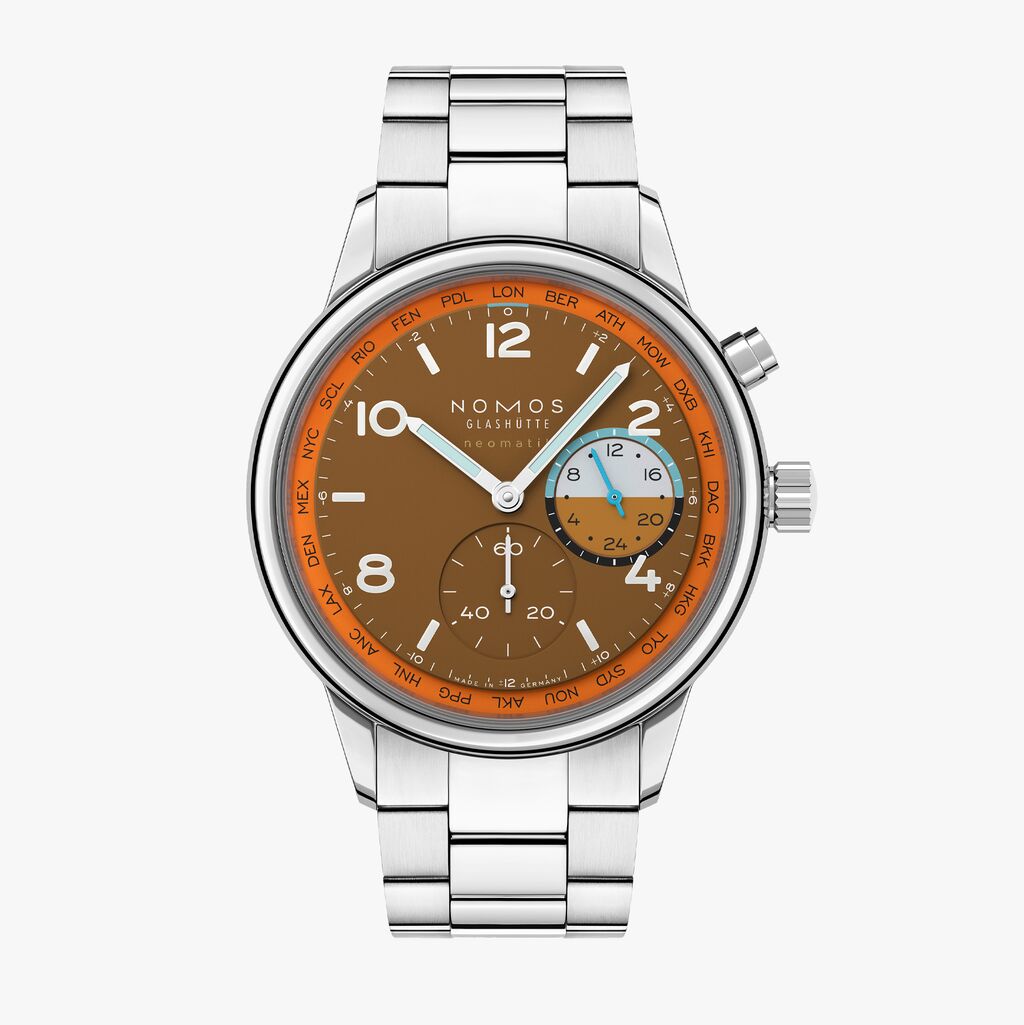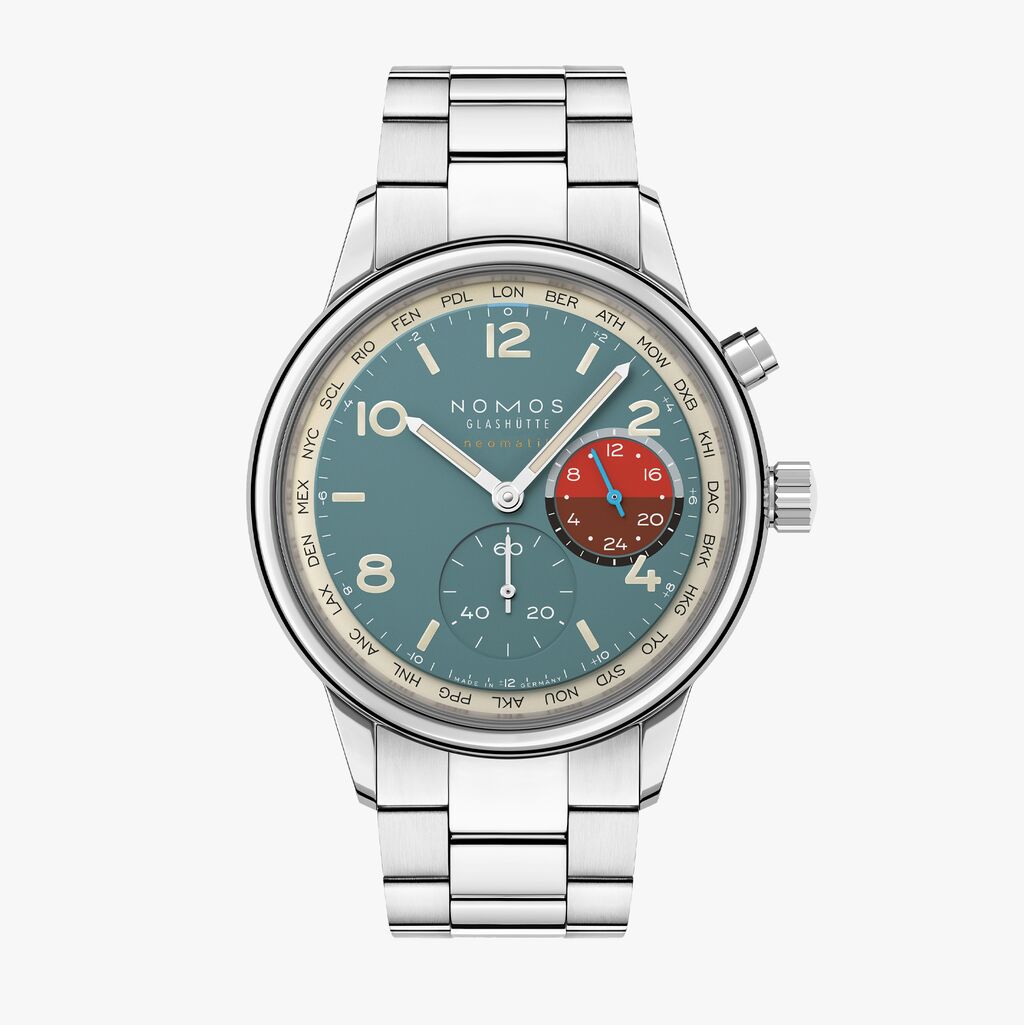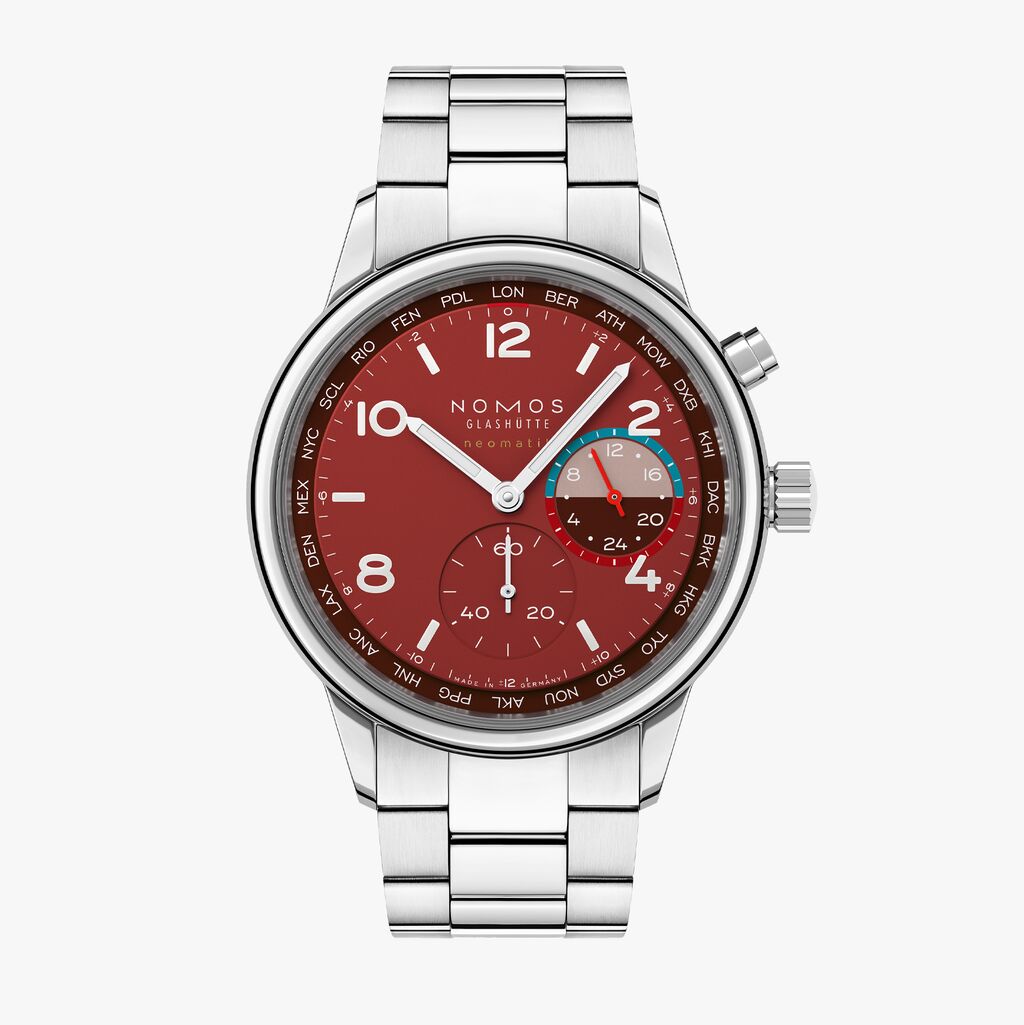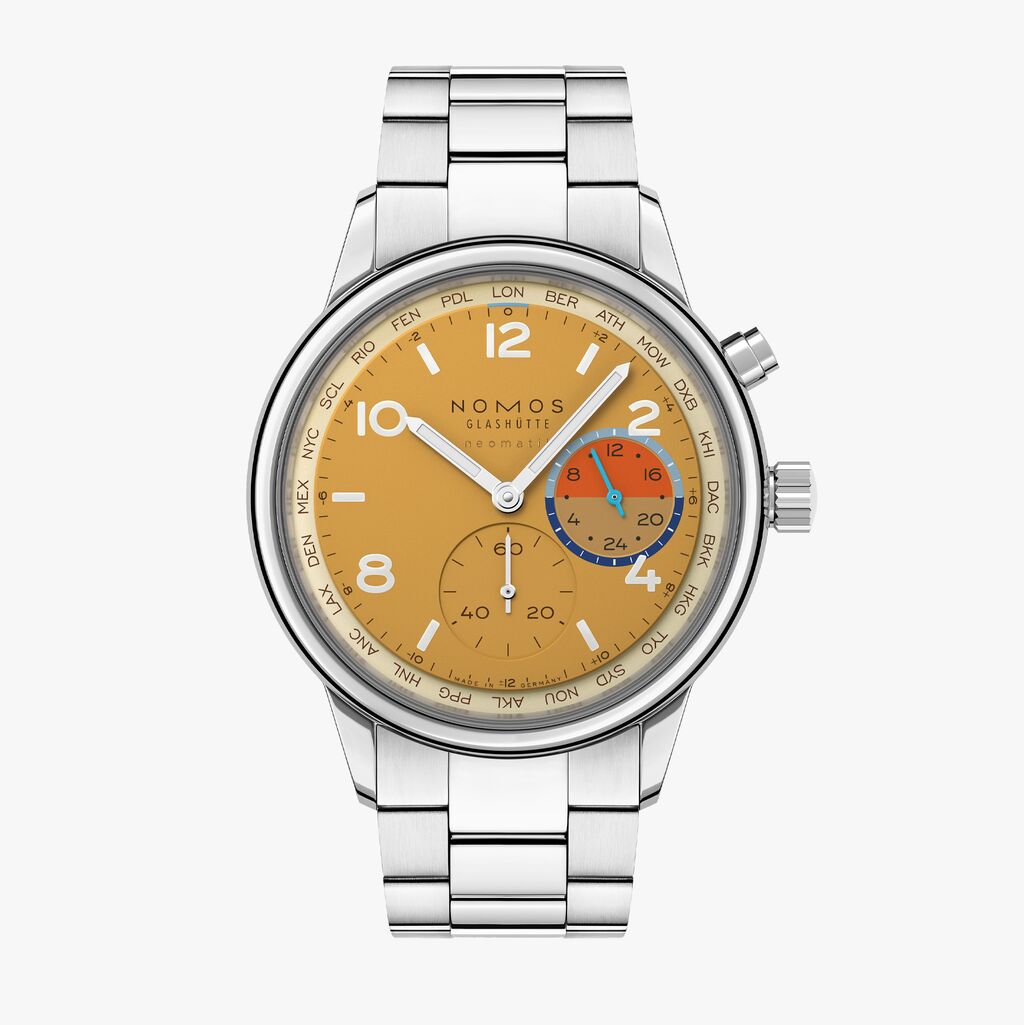A worldtimer or worldtime watch shows the time in more than one time zone. If two time zones are visible on the dial, it is referred to as a GMT watch. A worldtimer, more specifically, allows you to see usually 24 time zones at the same time. Here you can learn more about both complications in terms of technology and design, as well as their respective advantages and history. The watch collection from NOMOS Glashütte includes both GMT and worldtime models.
What does GMT mean?

The earth is divided into 24 time zones, with each one differing by one hour. From west to east, the time advances by one hour every 15 degrees—although there are also countries that have given themselves their own time zones. That said, the vast majority of countries follow the uniform system, which in 1884 established the solar maximum over Greenwich in England as the Prime Meridian (GMT: Greenwich Mean Time) and gradually replaced the practice of countless local times throughout the world.
What does the addition GMT mean on a watch?

A mechanical watch that includes GMT in its name displays a second time zone alongside the local time—originally Greenwich Mean Time, as the mechanism was initially developed for pilots in the 1950s. However, the use of the complication soon gained in importance outside of aviation as well, especially for frequent travelers and business people. For some time now, any time zone can be set as the home or reference zone on GMT watches. Some watch models also offer more than the usual 24 time zones and take into account countries such as India, which has a time difference of 5.5 hours from Greenwich.

How does a GMT watch work?
A movement with a second time zone complication requires a gear train to drive a 24-hour hand or display, which turns once during the course of a day – instead of twice as in the case of the 12-hour display for local time. This gear train can be added to the movement as a module or integrated into it. Depending on the mechanism, the second time zone is selected via the bezel, a dedicated position on the crown, or a pusher on the case. Since the time zones in GMT functions make hourly jumps, only a single hand is needed to display the second time on the dial. It can be placed in the center or on a subdial and needs a 24-hour scale. Of course, the scale itself can also turn and the display point can remain fixed, as is the case with Tangomat GMT from NOMOS Glashütte. In this watch, a red arrow at 3 o'clock points to a 24-hour disk, visible through a window in the dial. A window at 9 o'clock indicates which second time zone has been selected.
How does a mechanical watch with a worldtime function work?

Worldtime watches show the time in 24 different time zones on the dial using reference cities. In addition to the gear train for the 24-hour display of a second time zone, their caliber contains a further wheel that is coupled to a city ring. This city ring usually runs around the outer edge of the dial and can be controlled via the crown or a pusher. It is linked to the respective local time, which is often displayed on a subdial. Alternatively, the city disk can be arranged so that all time zones can be read simultaneously—for example, by assigning it to the local time on the main dial. In some models, the adjustment is made via a rotating bezel. Additional functions can indicate whether it is day or night at a particular location, or whether daylight saving time applies there.
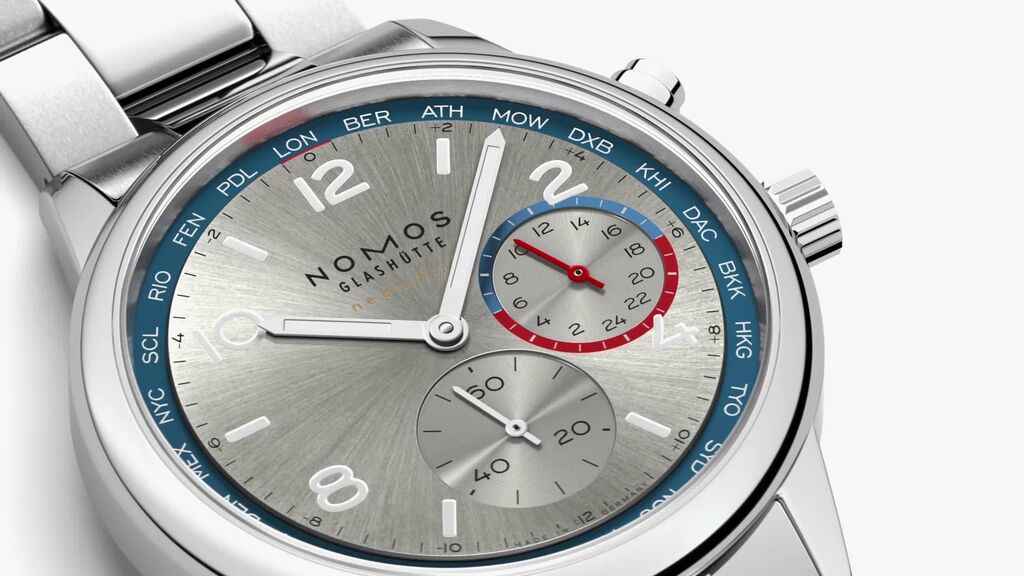
Do I need a worldtimer?
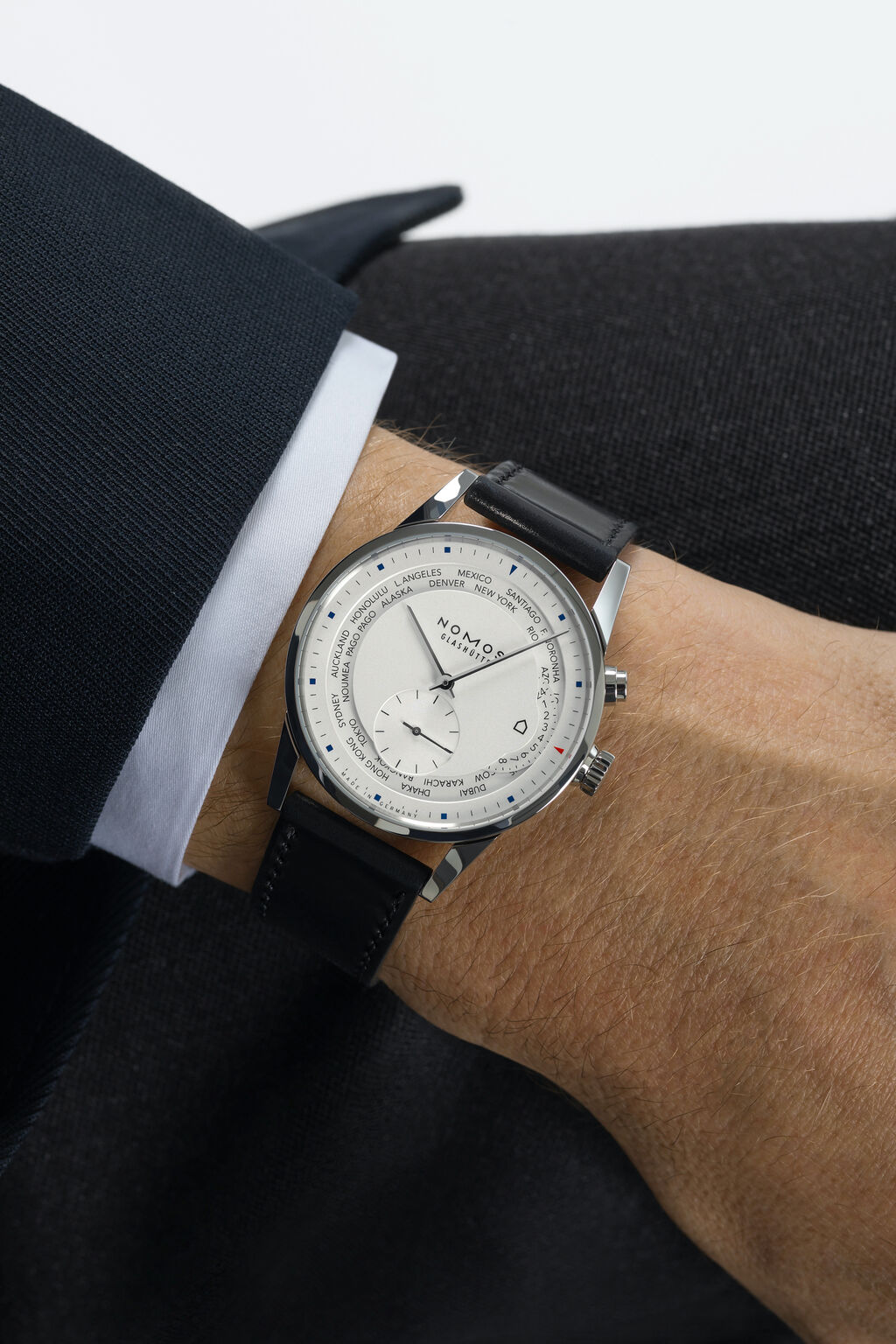
A worldtime watch is made for frequent travelers and global citizens—whether with professional contacts in other time zones, family or friends living far away, a keen interest in other regions of the world, or because you love to travel in your free time. The worldtime function is a useful and unifying complication that is always fun to use.
The world time mechanism in mechanical watches from NOMOS Glashütte
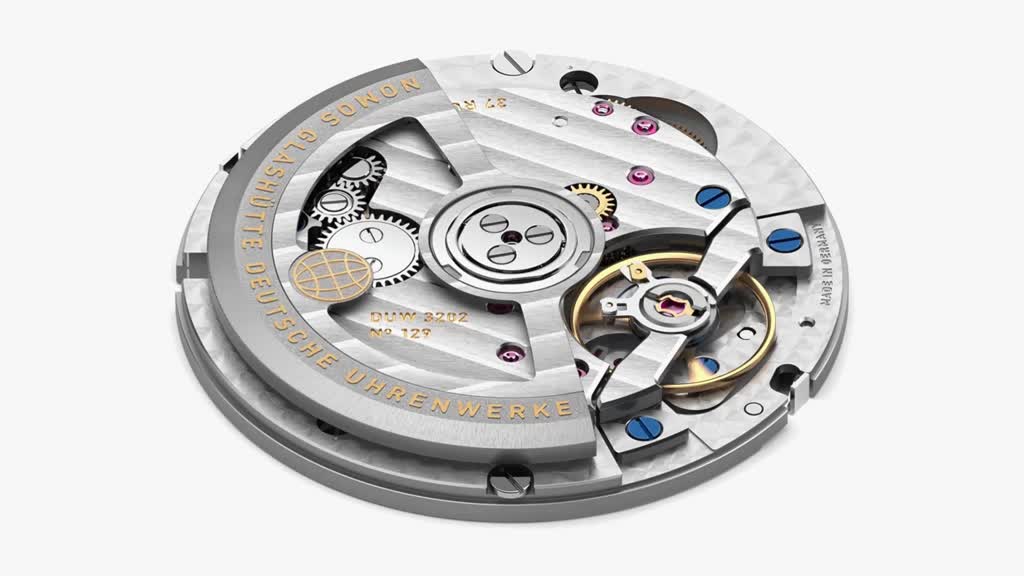
DUW 3202
The second worldtime caliber from NOMOS Glashütte is DUW 3202, an automatic caliber in the neomatik series in which the complication has been fully integrated into the caliber construction. It enables the display of 24 time zones, as well as quick and effortless switching between them. It also features a 24-hour display of the home or reference time. Despite the sophisticated complication, the caliber remains exceptionally slim at just 4.8 millimeters in height—ideal for a watch design that combines functionality with style. The newly designed neomatik movement is powered by the bidirectional rotor with a globe in gold.

DUW 3202 ticks in the automatic NOMOS watch Club Sport neomatik Worldtimer. After selecting the time zone for the second time display and synchronizing its hand with the hour hand of the main dial, the time zone on the main dial can be adjusted with just one click of the pusher. The minute track indicates the time difference between time zones, so you can keep an eye on everything when you're on the move—the time where you are, at home, and in the rest of the world.
Club Sport neomatik Worldtimer

DUW 5201
The automatic caliber DUW 5201 is the first NOMOS caliber with a worldtime function and an in-house escapement, the NOMOS swing system. It has a city ring and a 24-hour display for a second time zone. It also indicates whether it is day or night in that location. The worldtime caliber is used in two models: Tangomat GMT and Zürich Worldtimer.
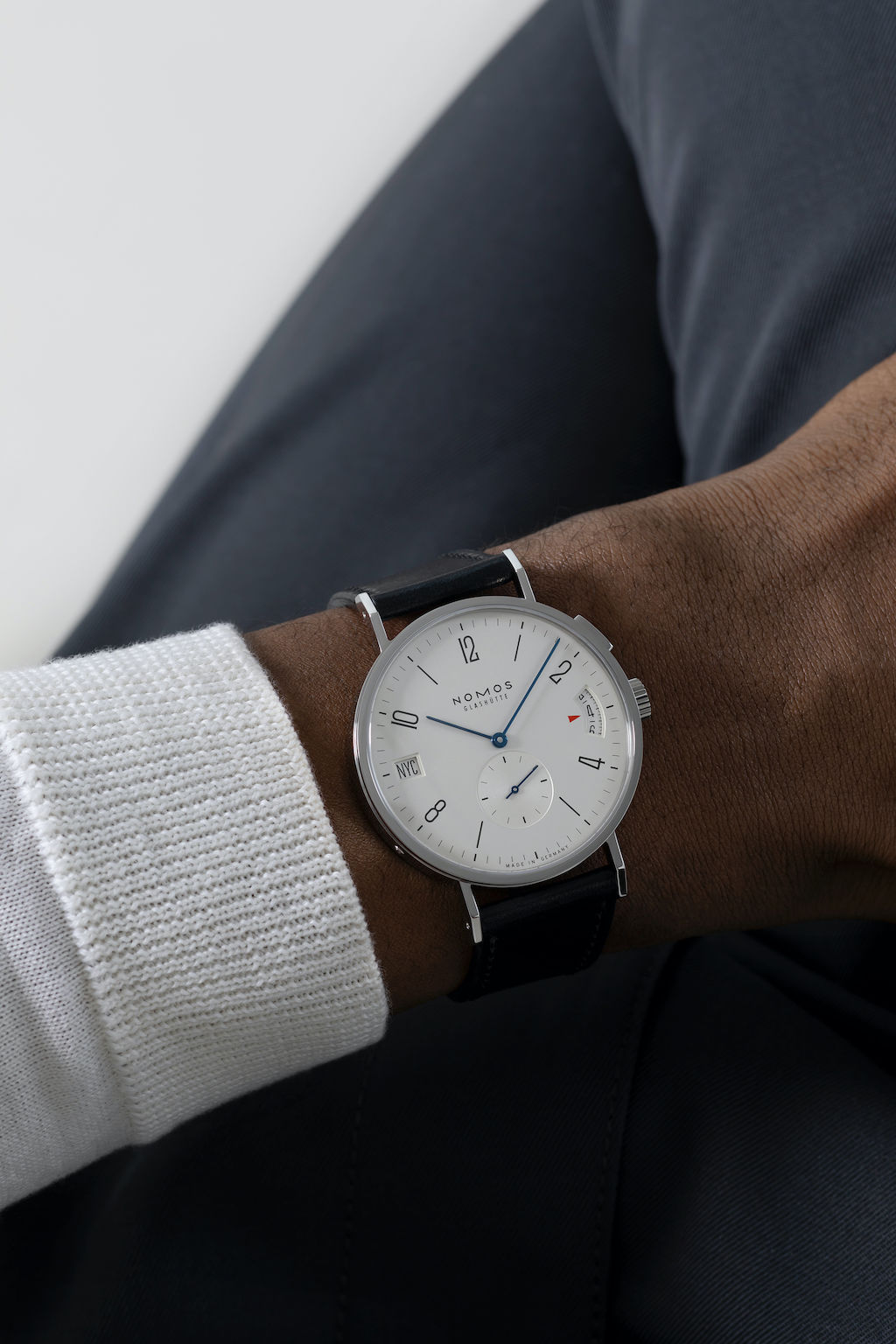
In the automatic NOMOS watch Tangomat GMT, the worldtime mechanism is displayed as an adjustable second time zone. The 24-hour display is synchronized with an important time zone that you would like to keep track of. Meanwhile, the hands on the main dial tell the time where you are currently located—and an abbreviation for the representative city is displayed through a window at 9 o'clock. When traveling through time zones, you can adjust the watch with a simple click of the pusher; the city display and hour hand then both jump forward one hour.
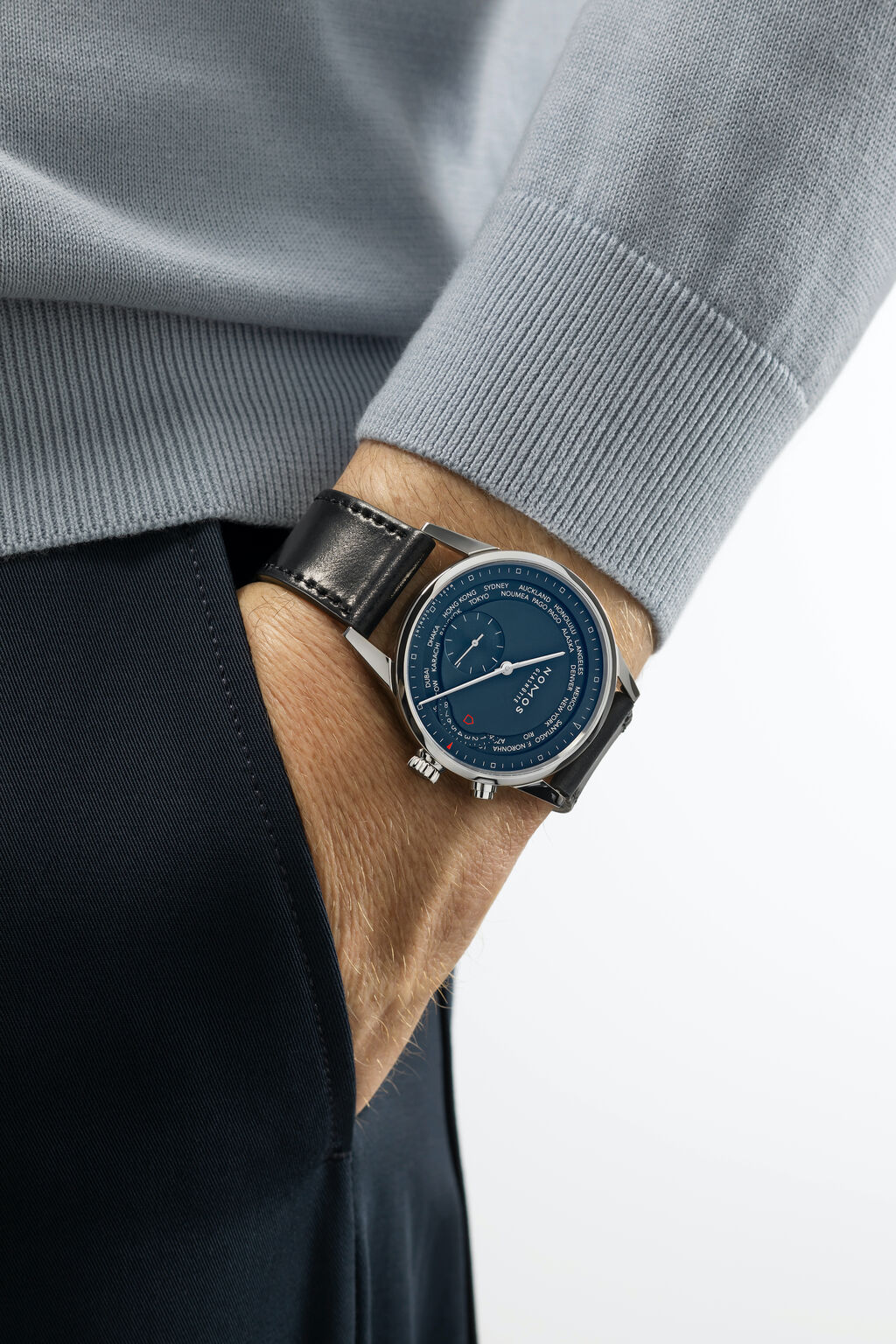
By contrast, the automatic NOMOS watch Zürich Worldtimer offers an overview of 24 time zones at once on the dial. Here, too, the respective home or permanent reference time is set once, while the current time zone can be changed with the click of a pusher. The position of the main hands depends on which city name can be read at 12 o'clock—the city disk and the hour hands move together, so that you can always find your way around the world with this elegant mechanical watch with an automatic movement from NOMOS Glashütte.
Zürich Weltzeit and Tangomat GMT
